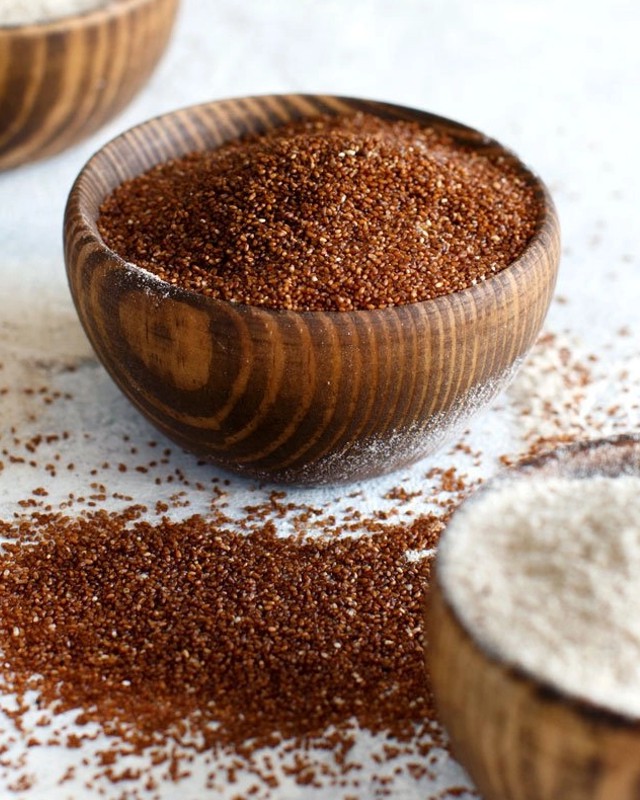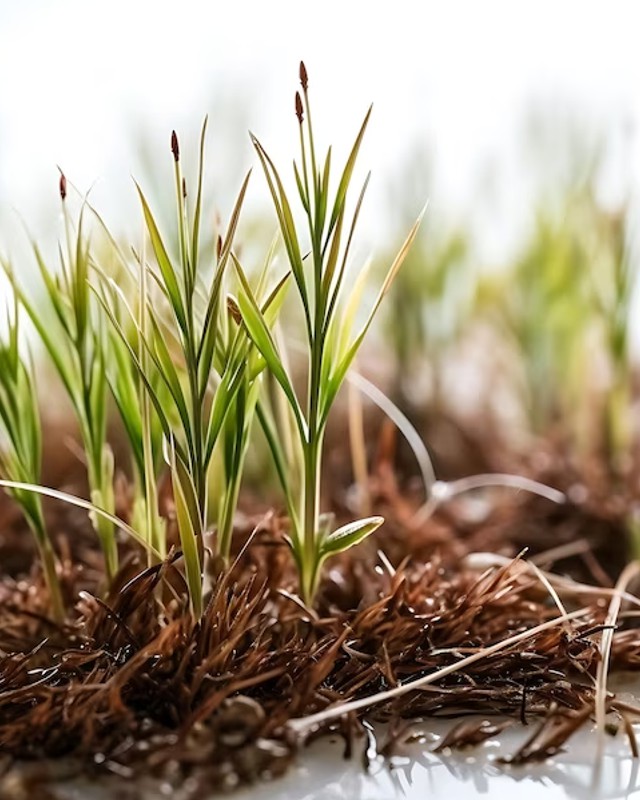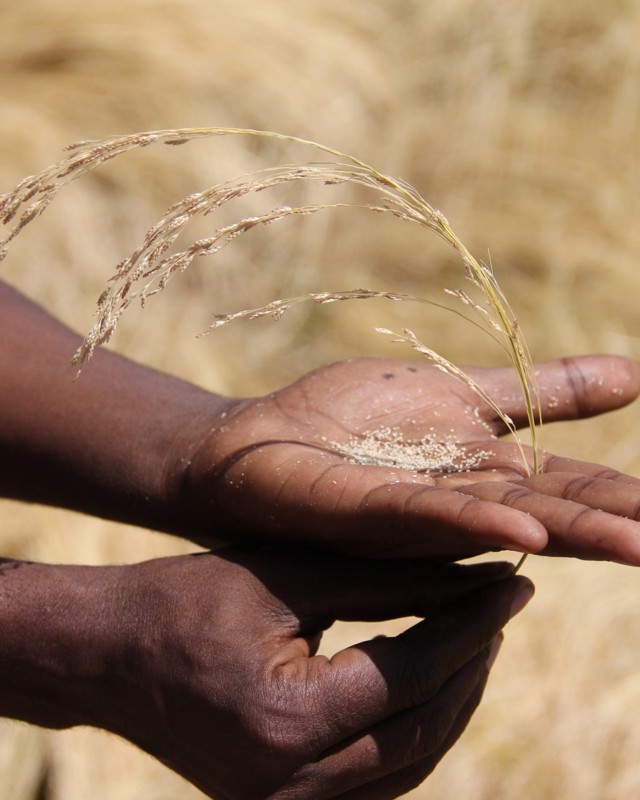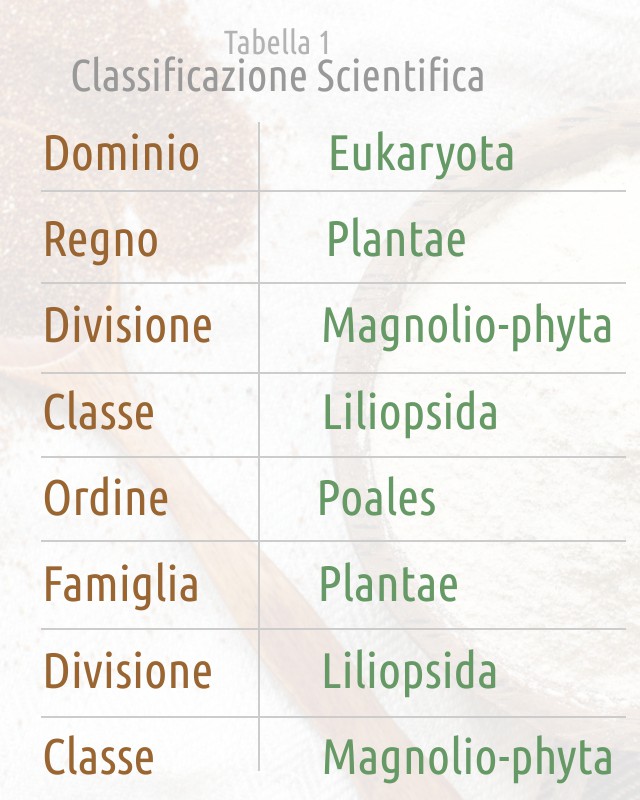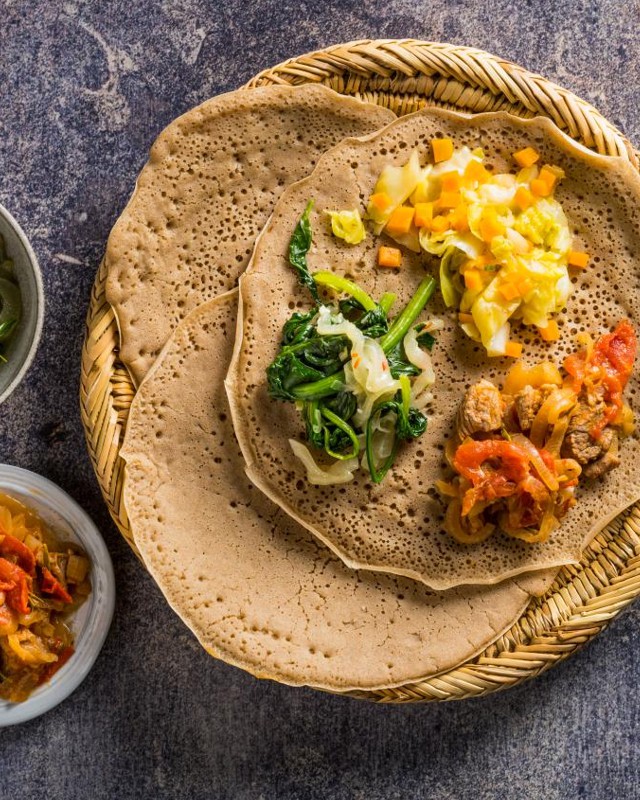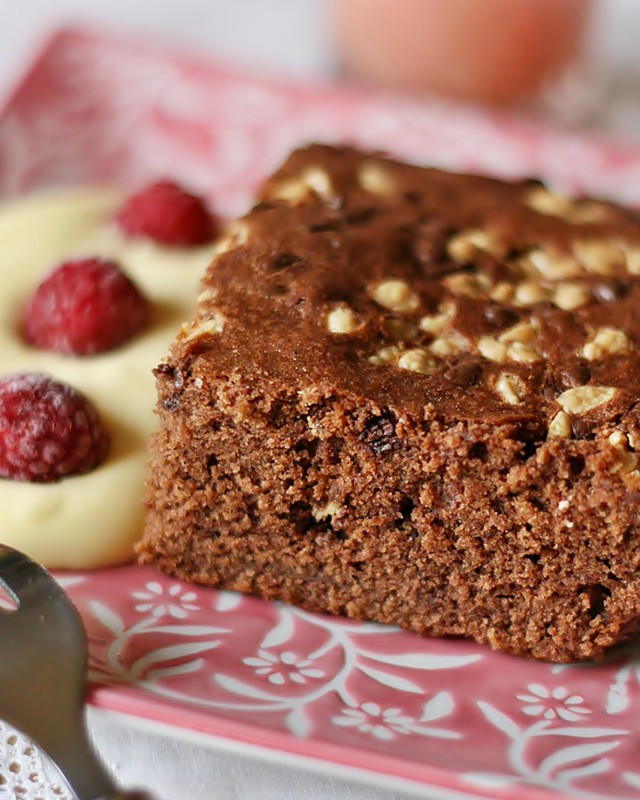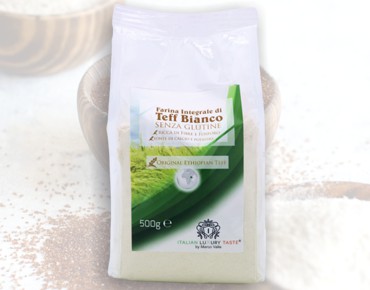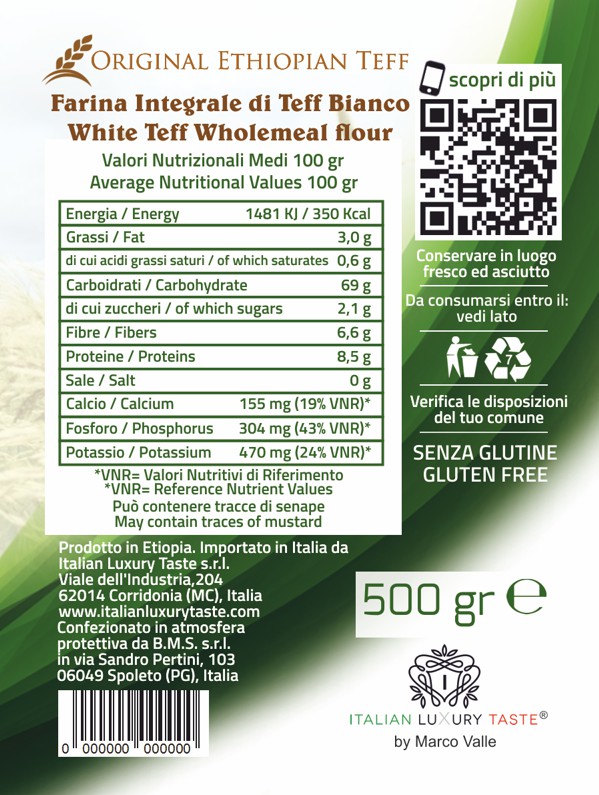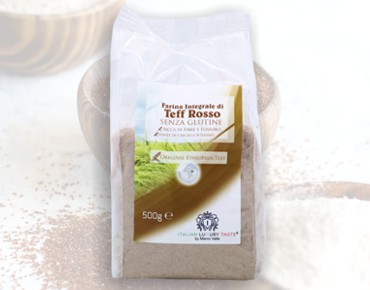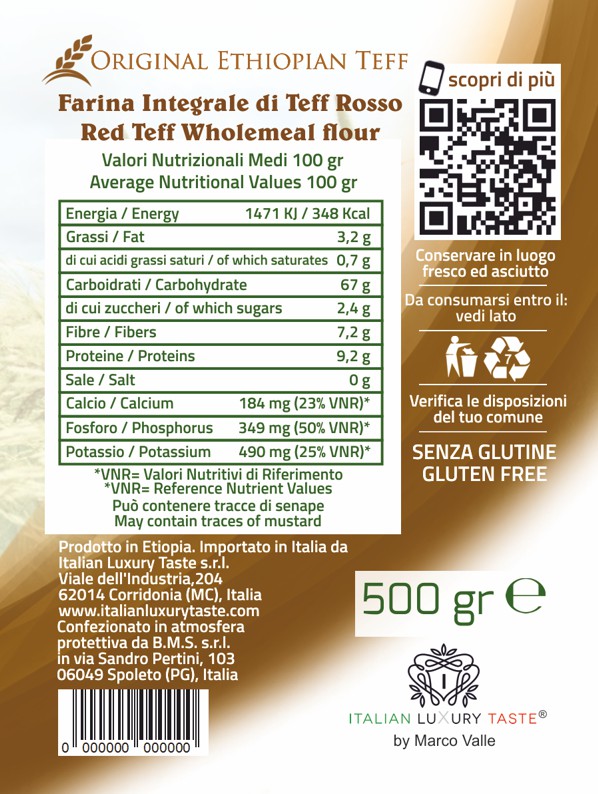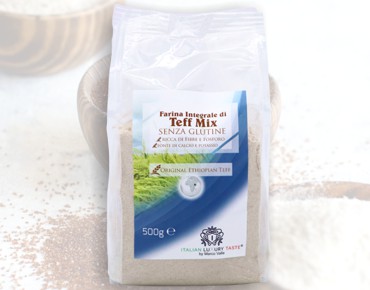Let's discover teff Teff
Teff is an annual plant with a fibrous root system, an erect stem and a panicle-like inflorescence. In most varieties a single plant can grow to produce up to 50000 caryopses from which Teff flour is made.
Teff grains can be white, red or mixed. Depending on use, a white or dark flour is derived. In Ethiopia, the area of origin, white grains are considered the most valuable.
White Teff flour has a rather sweet and delicate aroma, reminiscent of chestnut.
Dark Teff flour, on the other hand, has a more rustic and distinct flavor, similar to that of hazelnut.
Both varieties, light and dark, give off an enveloping, slightly roasted aroma.
The Teff plant can be stored for many years without being seriously damaged by pests, common in storage, and is tolerant to stagnant water.
